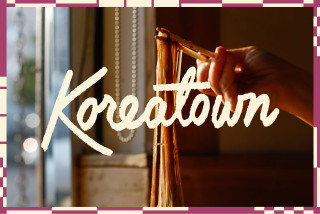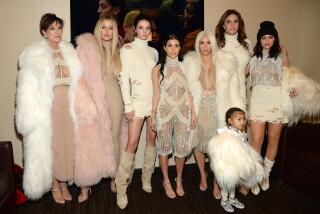Rodriguez: Land of the free, home of the fake
- Share via
Kim Kardashian’s butt is real. Some haters said it was fake. To prove them wrong, she had a doctor take X-rays to show that it was implant-free.
Odd as it sounds, when a symbol of trumped-up celebrity has a part of her anatomy authenticated, it’s a perfect expression of Americanness. So, on this Fourth of July, I’m adding Kim Kardashian’s butt to the list of the things I celebrate.
Americans have a complicated relationship with authenticity. We celebrate our national ability to reinvent our lives, to leave the past behind or get a makeover , but we simultaneously bemoan the absence of an authentic American culture.
Three years ago, Time magazine decided we needed a guide to finding authentic corners of the US of A. “ “Authenticity is hard to come by in this country,” Reed Tucker wrote. “We don’t get it from our … politicians, we don’t get it from our lip-syncing pop stars.” Or, he went on to say, in the places we choose to spend our vacations, like Disney World, Las Vegas or Universal Studios.
In 2006, in a CBS.com article, commentator Dick Meyer pined for the genuine. “We are surrounded by phonies. And phoniness,” he complained. “We shop at malls that are designed to look like ‘real’ small town centers. We live in gated or planned ‘communities’ with names like Pheasant Crossing and River Run selected by real estate developers.... Even bodies are artificial; we have fake boobs, dyed hair, Botoxed eyes and liposuctioned thighs.”
Meyer sees the flimflam factor as being painfully amplified by a new-media surge. He’s not wrong, but the syndrome isn’t a late-breaking phenomenon. It goes so deep that despite all our whining about inauthenticity, it’s impossible to separate phoniness from what it means to be American.
Temple University American studies professor Miles Orvell contends that the tension between the authentic and the inauthentic is “a primary category in American civilization.” The hunger for authenticity, he argues, is a reaction against our constant striving for what’s new and improved. It’s one way we manage stress in a culture that deifies change.
This isn’t an abstract process. The social and technological advances around the turn of the 20th century, Orvell writes, led to the “widespread middle-class enthusiasm for imitation Colonial furniture and architecture,” which offered a “comforting security in the face of rapid change.” At about the same time, museums — institutions designed to preserve “genuine artifacts” — began to proliferate.
Nostalgia, then, is itself a search for authenticity. Paradoxically, the past is generally taken to be more real than the inauthentic present. But like it or not, the new, the “inauthentic,” is the price of progress, as well as of freedom.
Author and New York University English professor Perry Meisel argues that America’s greatest virtue is that “its ground is invented” and that it doesn’t derive its legitimacy from notions of rootedness. In the American context, the “artificial is good — the only good,” because it is a byproduct of our belief in human possibility and reinvention.
Maybe so, but that doesn’t stop us from feeling a need to compensate for constant change. These days, a lot of authenticity-hungry Americans turn to ethnic food joints, reclaimed inner-city neighborhoods, organic food or the faux antiques of Restoration Hardware to counteract the incessant forward movement of U.S. life. Even a place as artificial as Las Vegas has tried to give itself a sheen of authenticity. Several hotel-casinos showcase paintings of past masters to give their European, high-culture stylings the feel of being more than skin deep.
“Keeping Up with the Kardashians” and Las Vegas have a lot in common, of course, not least a veneer of reality covering a great deal of artifice. And when Kim Kardashian seeks expert verification that the most celebrated part of her body is God-given, it’s a living, breathing, sashaying reminder of the very American tension between the authentic and the fake.
That doesn’t make her reality show any more real, but it’s comforting to know that amid all the fakery, Kim Kardashian’s behind is the real deal.
More to Read
A cure for the common opinion
Get thought-provoking perspectives with our weekly newsletter.
You may occasionally receive promotional content from the Los Angeles Times.










